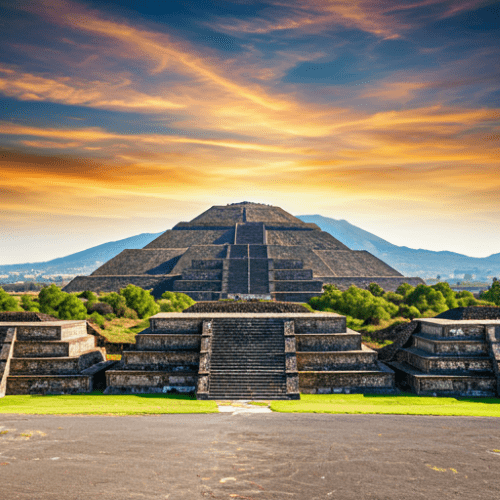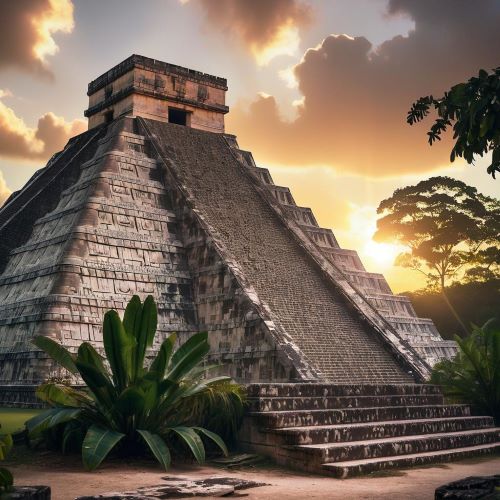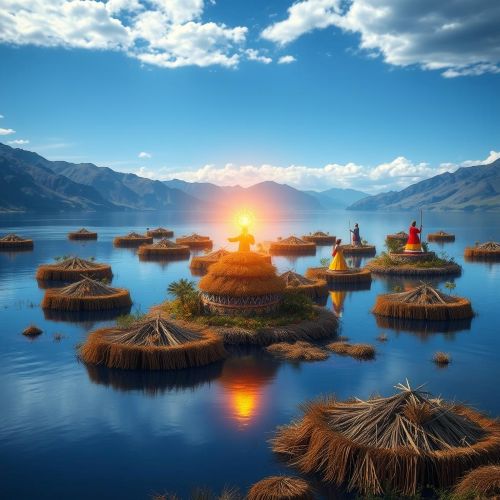Khajuraho : The Blending of Cultures
At a glance
| Description | |
|---|---|
| Mythology | Indian Mythology |
| Country | India |
| Closest airport | Khajuraho Airport (HJR) |
| Type | Constructed |
| Accessibility | 10/10 |
Introduction
Khajuraho, a UNESCO World Heritage Site in Madhya Pradesh, India, is celebrated for its breathtaking temples and masterfully carved sculptures. Built by the Chandela dynasty between 950 and 1050 AD, these architectural wonders reflect India’s artistic brilliance and deep-rooted mythology. Nestled in the Chhatarpur district, this historic town offers a glimpse into a bygone era, where every intricate carving tells a tale of devotion, culture, and tradition. A visit to Khajuraho is more than just sightseeing—it’s an immersive journey through India’s artistic and spiritual legacy.
Connection with Mythology
Khajuraho’s mythology is as enchanting as its architecture. One of the most well-known legends tells the story of Hemavati, a beautiful maiden who caught the attention of the Moon God while bathing under the night sky. Their union led to the birth of Chandravarman, who later became the founder of the Chandela dynasty. Inspired by his mother’s tale, he is said to have initiated the construction of the temples, embedding them with intricate carvings that explore themes of devotion, human desires, and spiritual transcendence.
The name “Khajuraho” is thought to originate from the Sanskrit Kharjuravāhaka, meaning “bearer of date palms,” referencing the once-abundant palm trees surrounding the area. The temples, built between the 9th and 11th centuries, are a testament to the synthesis of Hindu and Jain traditions, with most structures dedicated to Hindu deities while some honor Jain Tirthankaras. The sculptural panels, though widely known for their erotic imagery, primarily depict divine beings, celestial dancers, and mythological narratives, serving as a visual representation of India’s spiritual and artistic heritage.
Scholars interpret the sensual carvings in multiple ways—some see them as symbols of tantric practices, others as an educational guide to human relationships, and some as a metaphor for renouncing worldly pleasures before entering a sacred space. Beyond their artistic brilliance, these temples stand as a reflection of India’s medieval cultural ethos, seamlessly blending religious devotion with an appreciation for human experiences.
Ways to Get There
Khajuraho is easily accessible via air, rail, and road, offering multiple travel options for visitors.
By Air:
Khajuraho Airport (HJR), located about 5 km from the town, has regular flights from major cities like Delhi, Mumbai, and Varanasi. Airlines such as IndiGo and Air India operate services here. Upon arrival, travelers can hire taxis, auto-rickshaws, or use hotel pickup services for a convenient transfer to the city center.
By Train:
The Khajuraho Railway Station (KURJ), situated around 6 km from the main town, connects the region to Delhi, Jhansi, and Varanasi. Popular train options include the Vande Bharat Express and Khajuraho Express. For additional connectivity, travelers can reach Jhansi Junction, a major railway hub about 175 km away, and continue the journey by taxi or bus.
By Road:
A well-developed road network links Khajuraho to cities across Madhya Pradesh and beyond. Direct buses operate from Satna, Jhansi, and Bhopal, while the scenic route from Delhi via Agra, Gwalior, and Jhansi spans approximately 663 km, taking around 10 to 13 hours. Visitors can opt for state-run buses, private taxis, or self-drive cars for a flexible and comfortable journey.
What to Look For
Khajuraho is renowned for its breathtaking temples, which are categorized into three main groups: Western, Eastern, and Southern. Each group offers a unique glimpse into the region’s architectural and cultural heritage.
Western Group:
This is the most prominent and well-preserved cluster, featuring the Kandariya Mahadeva Temple, the largest and most intricately adorned shrine dedicated to Lord Shiva. Another significant temple is the Lakshmana Temple, which honors Lord Vishnu and boasts detailed carvings depicting scenes from Hindu mythology. The Chitragupta Temple, dedicated to Surya (the Sun God), and the Devi Jagdamba Temple, known for its artistic sculptures, are also part of this group.
Eastern Group:
Primarily consisting of Jain temples, this group includes the Parsvanath Temple, the largest of its kind in Khajuraho, with exquisitely detailed carvings. The Adinath Temple, dedicated to the first Jain Tirthankara, stands out for its striking black idol and ornamental sculptures. The Shantinath Temple, another important Jain site, adds to the spiritual diversity of the region.
Southern Group:
This less-visited section features the Duladeo Temple, renowned for its intricate carvings of celestial dancers, and the Chaturbhuj Temple, which is unique for its absence of erotic sculptures. Instead, it houses an impressive four-armed statue of Lord Vishnu.
Cultural Highlights:
One of the most celebrated events in Khajuraho is the Khajuraho Dance Festival, held annually in February. This week-long festival brings together renowned artists performing classical Indian dance forms such as Kathak, Bharatanatyam, Odissi, and Kuchipudi. The illuminated temples provide a mesmerizing backdrop, enhancing the cultural experience for visitors.
Need a place to stay? Book your hotel room now!
Importance in cultural history
Khajuraho stands as a remarkable testament to India’s rich artistic and architectural heritage. Constructed during the rule of the Chandela dynasty in the 10th and 11th centuries CE, these temples epitomize the finest examples of Nagara-style architecture. Despite the destruction of several structures over time, around 20 temples remain, reflecting a society that embraced both Hinduism and Jainism.
The temples’ intricate carvings depict deities, celestial beings, musicians, dancers, and scenes from everyday life, offering insights into the cultural and spiritual practices of the era. Among their most famous features are the sensuous sculptures, which, rather than being solely erotic, symbolize the integration of human desires within a broader spiritual framework. Rooted in Tantric philosophy, they illustrate the belief that physical love can be a means of attaining higher consciousness.
Beyond their artistic grandeur, these temples serve as a cultural landmark, showcasing the creativity and craftsmanship of medieval India. Now a UNESCO World Heritage site, Khajuraho continues to inspire historians, artists, and visitors, preserving its legacy for generations to come.
Best time to travel
The ideal time to visit Khajuraho is during the winter months, from October to March, when the weather is cool and comfortable for sightseeing. Temperatures range between 9°C and 32°C, making it the best season to explore the temples and attend the renowned Khajuraho Dance Festival in February.
The monsoon season, from July to September, brings moderate to heavy rainfall, transforming the landscape into a lush green paradise. While travel can be slightly challenging due to humidity, nature enthusiasts may enjoy the serene atmosphere and off-season discounts on accommodations.
Summers, from April to June, are intensely hot, with temperatures soaring up to 47°C, making outdoor exploration difficult. If visiting during this time, early morning and late evening temple visits are advisable.
Khajuraho is more than just a historical site; it is a gateway to India’s artistic and mythological heritage. Whether you’re drawn to its architectural brilliance, cultural significance, or spiritual essence, a visit to this UNESCO World Heritage site promises an unforgettable experience. Plan your trip wisely to make the most of this extraordinary destination.
Source
Contributors to Wikimedia projects. (2003). Khajuraho Group of Monuments – Wikipedia. https://en.wikipedia.org/wiki/Khajuraho_Group_of_Monuments
KHAJURAHO: TEMPLES & STORIES MORE THAN JUST EROTIC. (2022). https://www.aadar.co/blogs/aadarblog/khajuraho-temples-stories-more-than-just-erotic?srsltid=AfmBOop51iuf4NvwizN_lQbBfpc6fdEZZJid0oTRzU9IE4Q-OgReSJnC
UNESCO World Heritage Centre:
Government of Madhya Pradesh:
Incredible India:
Archaeological Survey of India:
“The Art of Khajuraho” by D. Dayalan
“Khajuraho: Temples and Sculptures” by Dhaky M. A.
Frequently Asked Questions
Lorem ipsum dolor sit amet, consectetur adipiscing?
Lorem ipsum dolor sit amet, consectetur adipiscing elit. Praesent convallis vestibulum justo, ac tincidunt nunc vehicula quis. Nullam id dolor quis orci malesuada feugiat. Curabitur aliquet libero at urna ullamcorper, ac ultricies nulla dapibus.
Lorem ipsum dolor sit amet, consectetur adipiscing?
Lorem ipsum dolor sit amet, consectetur adipiscing elit. Praesent convallis vestibulum justo, ac tincidunt nunc vehicula quis. Nullam id dolor quis orci malesuada feugiat. Curabitur aliquet libero at urna ullamcorper, ac ultricies nulla dapibus.
Lorem ipsum dolor sit amet, consectetur adipiscing?
Lorem ipsum dolor sit amet, consectetur adipiscing elit. Praesent convallis vestibulum justo, ac tincidunt nunc vehicula quis. Nullam id dolor quis orci malesuada feugiat. Curabitur aliquet libero at urna ullamcorper, ac ultricies nulla dapibus.
Lorem ipsum dolor sit amet, consectetur adipiscing?
Lorem ipsum dolor sit amet, consectetur adipiscing elit. Praesent convallis vestibulum justo, ac tincidunt nunc vehicula quis. Nullam id dolor quis orci malesuada feugiat. Curabitur aliquet libero at urna ullamcorper, ac ultricies nulla dapibus.
Lorem ipsum dolor sit amet, consectetur adipiscing?
Lorem ipsum dolor sit amet, consectetur adipiscing elit. Praesent convallis vestibulum justo, ac tincidunt nunc vehicula quis. Nullam id dolor quis orci malesuada feugiat. Curabitur aliquet libero at urna ullamcorper, ac ultricies nulla dapibus.









